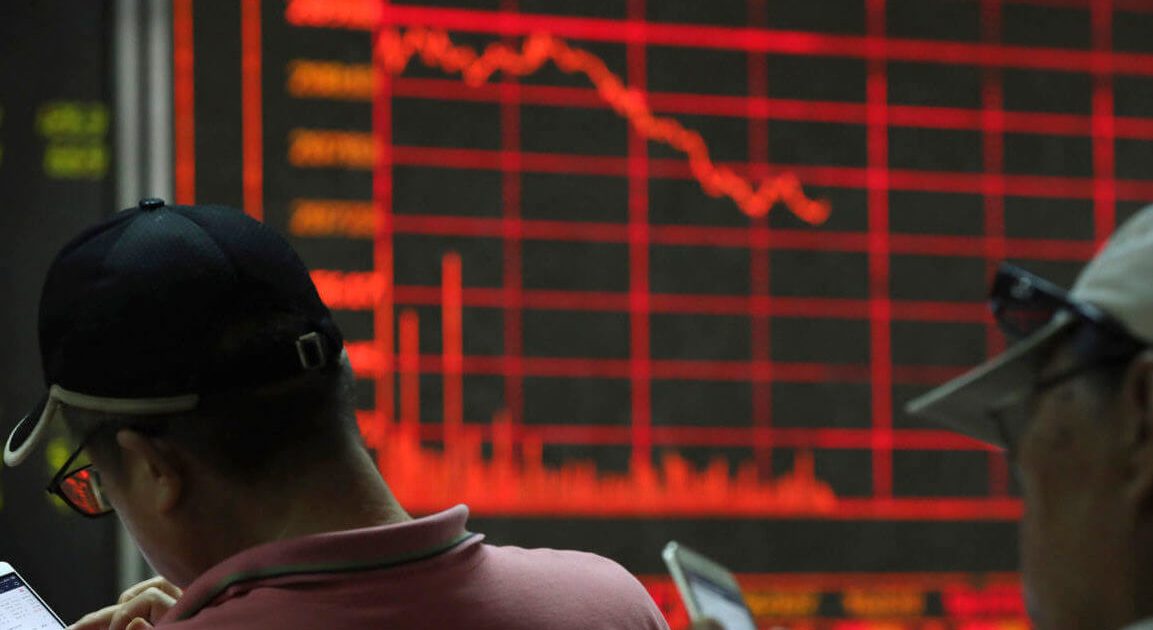- Barclays downgraded mega-cap tech stocks, given their extreme valuations.
- The S&P 500 P/E ratio is approaching the 2000 dotcom bubble peak.
- We can expect more volatility in the coming months.
Since the decline in March, mega-cap tech stocks have led the recovery in U.S. equity markets. After hitting a low of 6,879 on March 20, the Nasdaq Composite climbed 75% to an all-time high of 12,074 on September 2. Fears of a tech bubble have been mounting.
The euphoria behind the high-tech index began to fade the next day, as tech stocks fell 4.9%. The selloff continued on September 4 and the following week, following the Labor Day long weekend. The Nasdaq is now trading below 11,000.
The Tech Bubble Is Bursting
Even after the recent pullback, Barclays says stock valuations are at their 2000 dotcom peaks, with some of the bigger risks hidden in the tech darlings that drove the market rebound.
The Wall Street firm downgraded the FANMAG (Facebook, Amazon, Netflix, Microsoft, Apple, and Google-parent Alphabet) stocks to market weight given their extreme valuations.
Barclays U.S. equity strategist Maneesh Deshpande told clients:
Measures of equity valuations are now at 2000 dot-com bubble levels and appear to be pricing in an ideal scenario where there will [be] an extremely strong cyclical recovery driven by a vaccine, the market shares gains from the ‘Resilient’ (large cap tech) stocks will accelerate, and US presidential elections will not pose a significant headwind to risky assetsWe continue to recommend a selective equity exposure.
As the cyclical recovery takes hold, the FANMAG stocks might not be the market leaders anymore.
Top investor Rob Arnott, who is known as the “godfather of smart beta” investing, said:
It’s a bubble. Bubbles burst. The FANMAG bubble will be no exception.
Earlier this month, Arnott said the lockdowns and multi-trillion-dollar stimulus had fueled asset bubbles that will bring more pain down the line. At the end of August, we had a warning sign of a tech bubble. The tech sector was more valuable by market cap than the entire European market.
Talking about Apple stock, Arnott said:
At its recent highs, Apple was worth more than the entire FTSE index. In other words, the one stock was worth more than the entire publicly traded British economy. It’s a fantastic company with great products and superb management. But it will not produce more profits for its shareholders in the decades ahead than the entire London stock exchange.
The tech bubble has started to pop, but the selloff might not be over. Barclays said that even after the recent pullback, the current level of the index’s price-to-earnings ratio is high and approaching the 2000 dotcom bubble peak, when internet stocks rose and eventually collapsed, losing nearly 80% of their value within seven months.
Despite its pessimism, Barclays updated its 2020 S&P 500 price target to 3,100 from 2,800, mostly due to improved earnings guidance. This would imply a drop of about 7% from current levels. The company raised its estimate of 2021 EPS to $160 per share from $150, slightly below consensus.

The Selloff Could Extend to Other Sectors
Some would argue that another lockdown would be a boon to tech stocks, which would likely see another increase in their work-at-home software and services. Relying on this is a risky strategy. Some public health experts say the U.S. needs another lockdown, but Trump said he would not shut down the economy.
The U.S. presidential election could exacerbate market swings in the remaining months of 2020. A recent UBS Global Wealth Management investor survey showed that 65% saw politics as their primary concern, with the presidential election on November 3 just weeks away.
Willie Delwiche, investment strategist at Baird, says any selloff that spreads beyond the big tech-related stocks could indicate the pullback could spread further.
In the coming days, Delwiche is looking for signs of growing investor caution–such as buying of puts options, equity fund outflows, and declining bullish views in surveys–that indicate any overexuberance has subsided.
Another indicator is how investors respond to critical technical support levels, said Keith Lerner, chief market strategist for Truist SunTrust Advisory. The Nasdaq, for example, closed below its 50-day moving average on Tuesday for the first time since April but returned above it on Wednesday.
If you see these markets just slice through support levels, that’s a sign that the sellers have the upper hand.
Disclaimer: This article represents the author’s opinion and should not be considered investment or trading advice from CCN.com. The writer owns shares of Microsoft.




